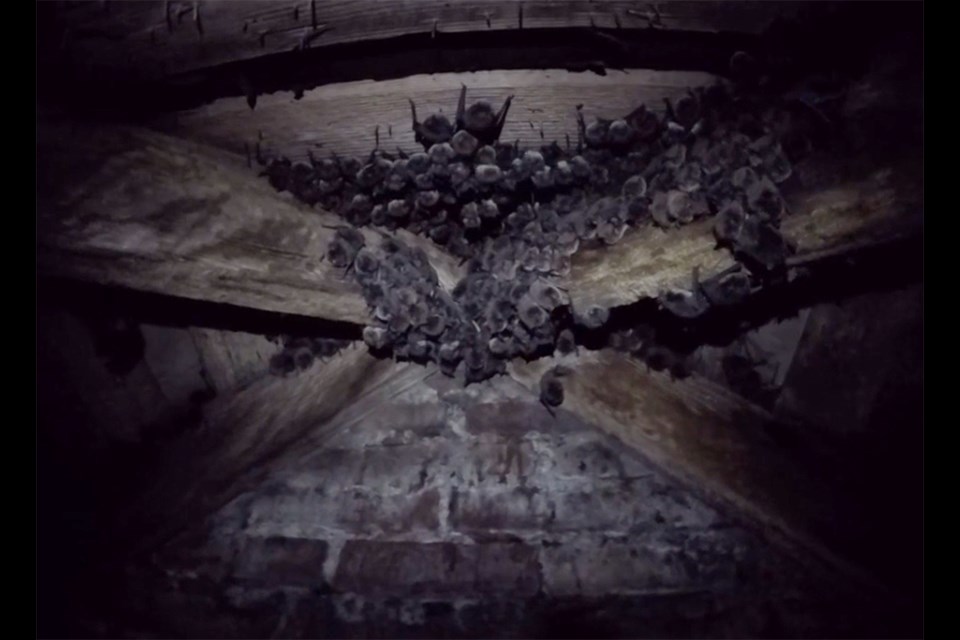As Bat Week wraps up Monday, Oct. 31, what some Delta residents may not realize is that a local historic house is home to the largest nursery colony of bats in B.C.
Located at Deas Island Regional Park, the Burvilla house, also known as the Burr Heritage House, is home to around 3,000 bats, mostly Yuma bats and little brown bats.
They rely on the habitat at the regional park and the surrounding area for food, mainly insects and thousands of mosquitoes.
Nine species have been detected in the house.
The colony is monitored by Metro Vancouver and the South Coast Bat Society.
“These bats safely coexist with the park caretaker, who lives in the house, and the appropriate protective measures are in place to ensure the bats do not impact this valuable heritage asset. Additional bat habitats - roosts and foraging sites - are located along the banks of the Fraser River, including on Westham Island, in Burns Bog, over farmland and in green spaces,” the city explains.
Bats have been in the house for around 20 years but monitoring increased in 2016 after it was found the colony grew significantly in the attic.
Every week or two from June to mid-August, a team counts bats as they emerge to hunt for insects at sunset.
Little brown bats are listed as an endangered species due to the threat of white-nose syndrome, a disease caused by an invasive and highly infectious fungus, which has added more importance to monitoring the colony.
In 2019, Alan Burger, president of B.C. Nature, wrote how bats in their nightly forages consume huge numbers of insects, including mosquitoes. A lactating female can eat up to 1,000 insects per night, he explained.
“The benefits to the community are numerous. In fact, you might say that bats perform a valuable public service. Metro Vancouver staff clean the attic of guano (bat droppings) when the bats are not in residence. These staff are conscientious with regard to the condition of Burrvilla and state categorically that the droppings are not harming the house,” he said.
Built in 1905 on River Road, Burrvilla, according to the city, reflects the turn of the 20th century economic expansion of Delta’s farming industry, and symbolizes the wealth and status attained by the prominent Burr family.
The man for whom the house was built, Harry Burr, was the son of W.H. Burr, who was an early pioneer involved in the incorporation of Delta. The house remained in Burr family ownership until 1974.
It was the first house in Delta to receive heritage designation in 1981 and was moved to Deas Island Regional Park the following year.
Last year, Community Bat Programs of B.C. declared the City of Delta “bat-friendly”, at the time marking the city as the fourth certified community in the province dedicated to protecting, learning and teaching about bats.
The city notes it will work with the Community Bat Programs of BC to identify opportunities to manage and enhance known bat roosts within the municipality and ensure best practices are implemented when demolition or modification of structures is required.
The city also notes it is working to enhance habitat quality and biodiversity on public and private lands as part of Delta's Birds and Biodiversity Conservation Strategy.



